It is time to get a new indoor plant for your home. News alert, we have an amazing suggestion for you: peperomia scandens!
This lovely light green plant doesn’t require much plant care and guess what, it will look amazing wherever you put it!
When you learn more about its proper care, I’m sure your indoor conditions will fit and you’ll want to have this trailing plant in your living room.
Once you get this amazing plant, that’s about it. There is no extra cost. It is a grateful plant to owe. Time to get new plants? Let’s learn more about peperomia scandens then!
Cupid Peperomia (Scandens) Features
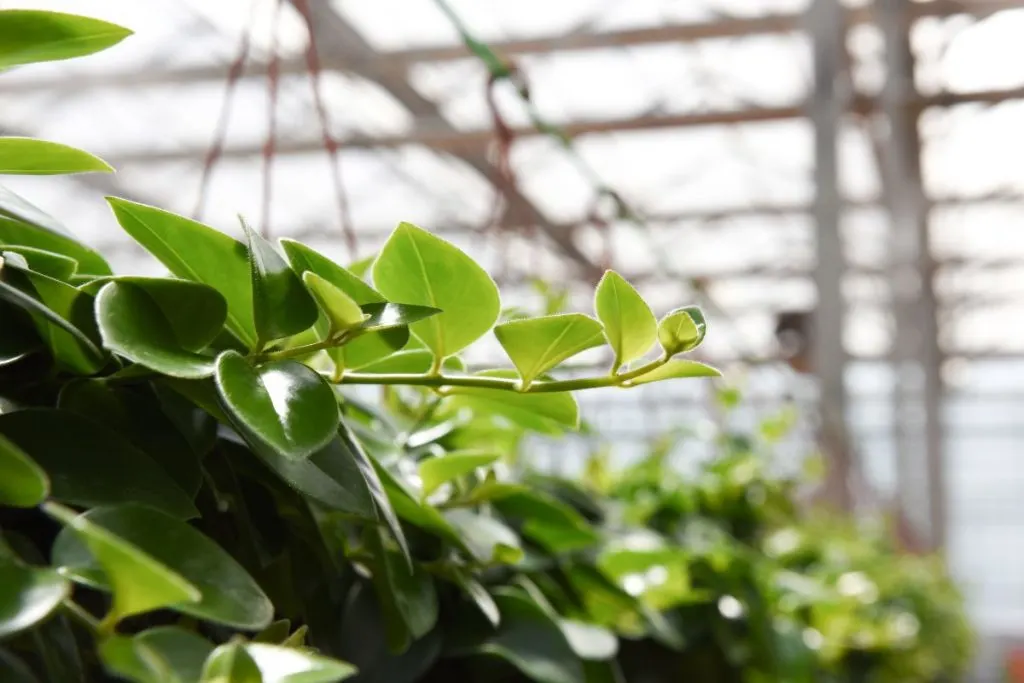
The species botanical name obtusifolius indicates blunt leaves. In foreign languages, the names are baby rubber plant, pepper face, Zwergpfeffer, and magnolia leaf.
A small annual or perennial herbaceous evergreen plant, lush and compact, it is grown indoors mainly because of its ornamental foliage and small size. It has thick (juicy) stems on which grow fleshy or leathery leaves, large and flat.
This is a variety of peperomia with heart-shaped leaves, smooth edges, gathered in tufts, and deeply furrowed with veins; the upper side is covered with thick down which gives a velvety tone to the dark green color.
The small flowers of this species of peperomia are gathered in erect spikes. Peperomia belongs to the species Piperaceae, and the genus includes over 1000 species native to tropical and subtropical regions, but the vast majority are native to Central America and South America.
Peperomia species that are most commonly grown include:
- curly peperomia,
- clergy paper,
- leaf peperomia,
- silver peperomia,
- smooth peperomia.
Hanging Basket Here She Comes
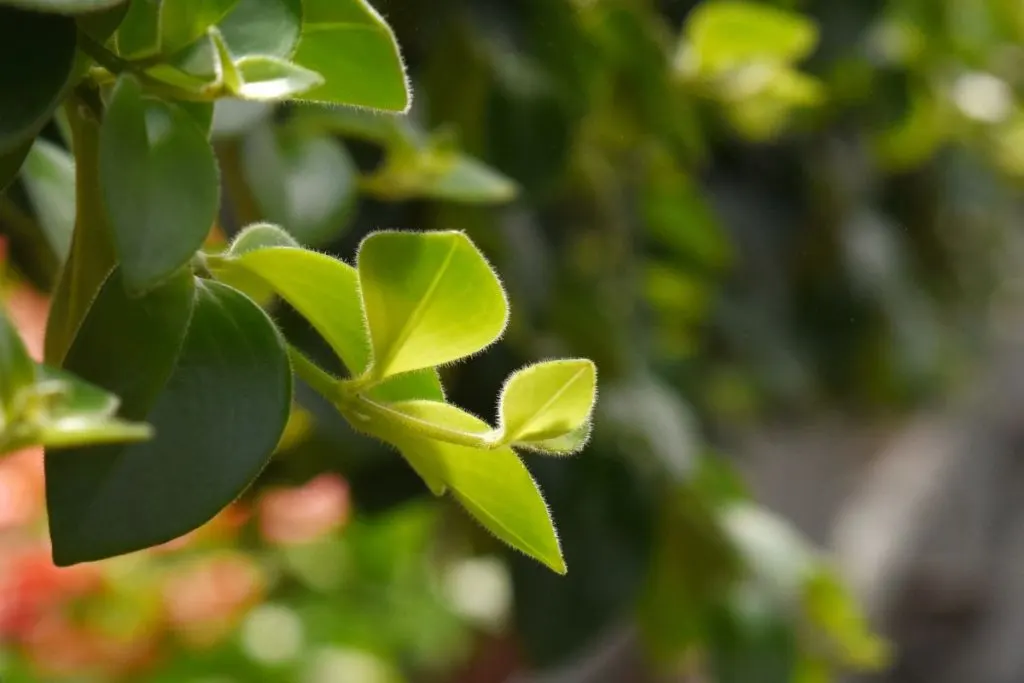
Due to its appearance, you will often think that this plant is not an ideal choice for hanging baskets. Its fleshy leaves look “heavy,” so it often doesn’t seem like a good choice for baskets.
Still, peperomia scandens is one of the most beautiful plants for hanging baskets in your home. The ideal place for this plant is a corner of the wall in your living room or hallway.
It will fill the space in your home and give a great look to your interior.
Learn All About Peperomia Scandens Maintenance And Care
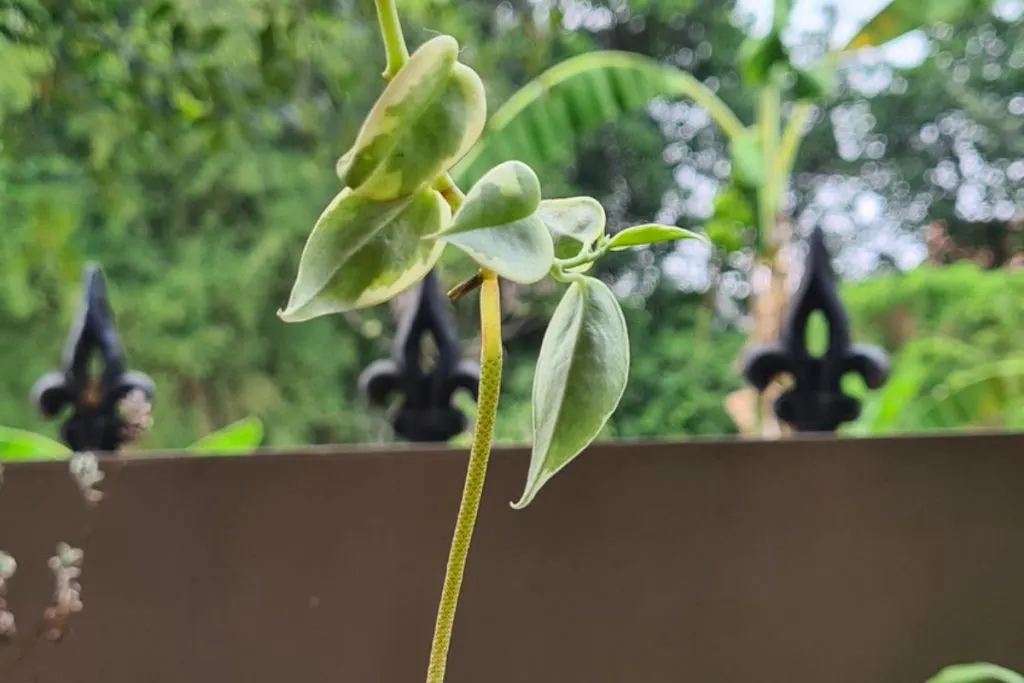
It might seem like a needy plant, but trust me, as with any other plant, after you read its care guide once, you realize that this is a regular low-maintenance plant.
Are you asking yourself these questions; How to solve damaged foliage issues? Low light or too much light? What’s the right room temperature water for this plant? Does this plant need artificial lighting?
Soil dries completely and you don’t know what to do? Root rot issues? Problem with fungal infection? Say no more!
In today’s article, we’re going to talk about maintenance and care for this lovely peperomia scandens plant.
Indirect Light Or Direct Sunlight For Peperomia?
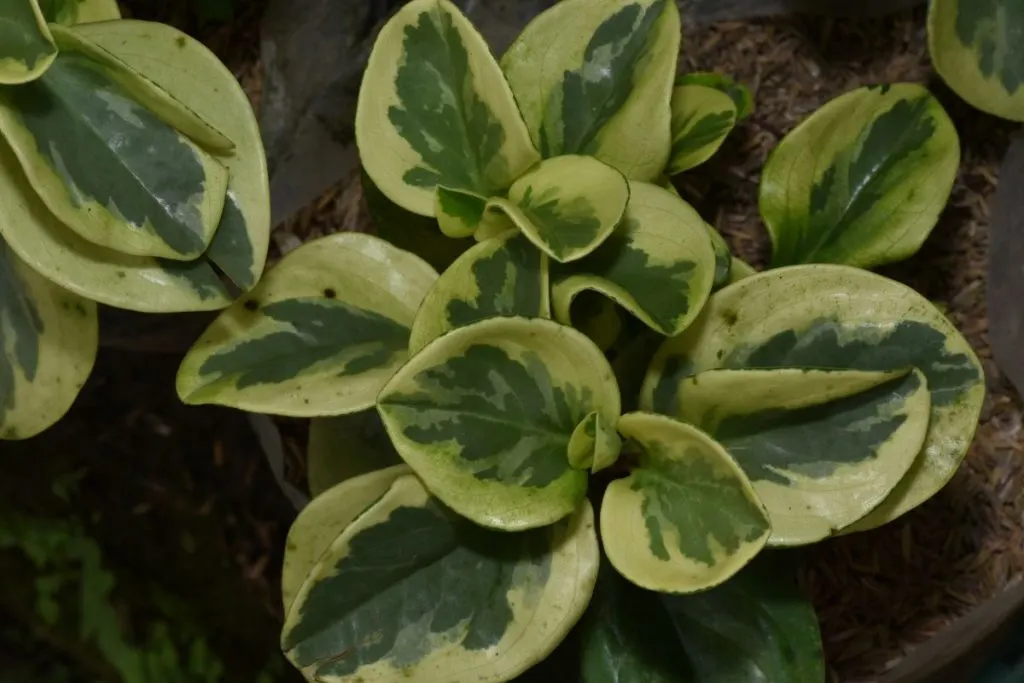
Peperomia scandens need enough light, including a variety of different lighting in its growing season, but avoid direct sunlight which damages the leaves. Avoid placing behind a window that is mostly facing south!
Prefer east or west and soft light. As soon as you see the leaves fade, it is a sign that they are receiving too much light; change them instead.
If you’re growing this plant indoors the best option is filtered light (medium-light) and bright indirect light. You can get it on your bright window (south-east window). Direct sun and direct light can easily kill your peperomia scandens.
Excessive sunlight causes problems with these types of plants. Your peperomia’s green leaves will suddenly turn into yellow leaves and causes leaf curl.
The next thing you know: your plant is dying. Dappled sunlight that your plant can get through the curtains is sometimes the best option.
Watering Schedule For Peperomia Scandens Variegata
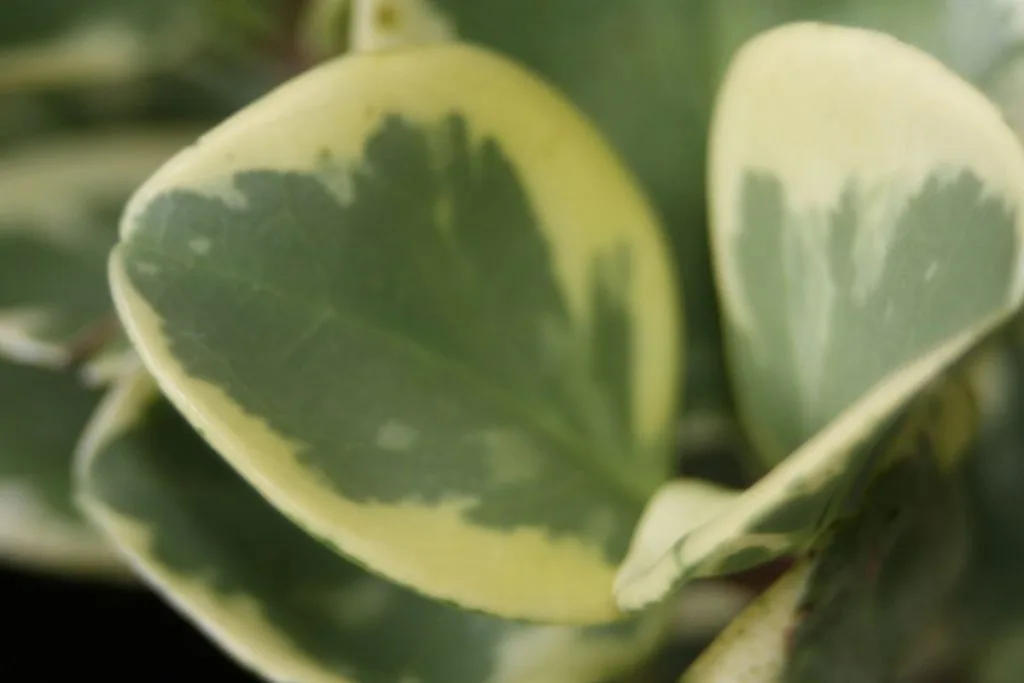
Watering Peperomia is done after the top layer of soil has dried. Before watering it is necessary to check that the soil is dry to a depth of at least 3 inches.
During the summer it needs to be watered more often, at least twice a week.
In winter, watering is reduced, so it is necessary to water once every two weeks. The amount of water depends on the size of the plant and how quickly it is consumed. It is important to use stagnant or soft water and water under the root.
The soil in the pot must be well-drained to get rid of excess water that can lead to growth problems.
What Potting Soil To Choose
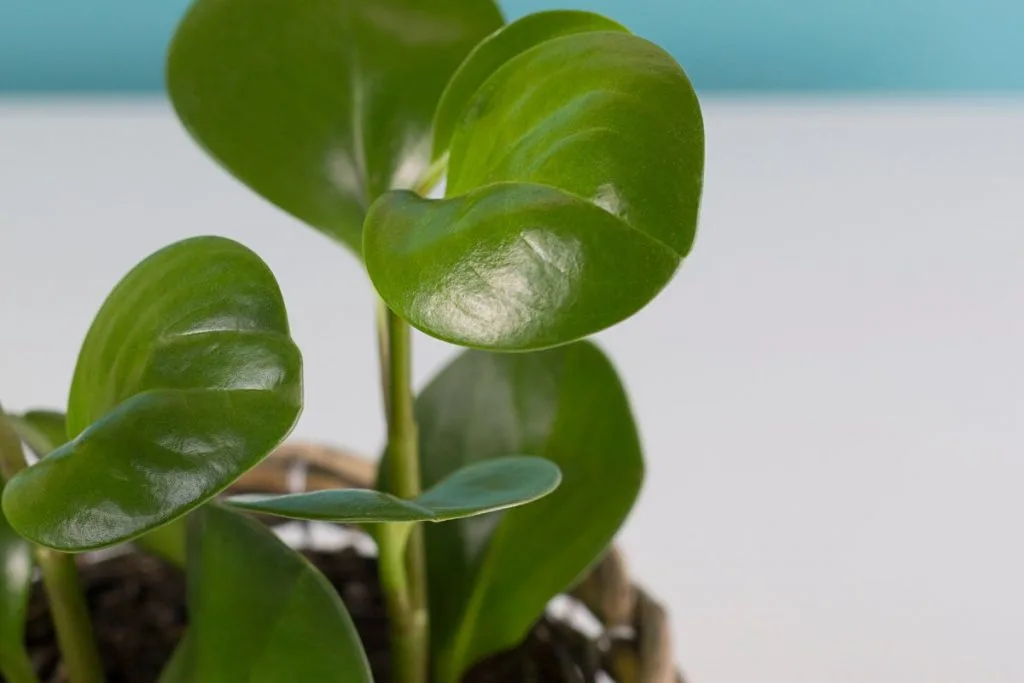
Scandens peperomia appreciates the substrate is light and well-drained: 2/3 of the soil for sprinkling and 1/3 of the sand. If necessary, it is transplanted at the end of winter with good quality potting soil.
When growing peperomia scandens, be careful, he likes to feel cramped, so choose a pot size barely bigger than the previous one. Pebble tray, peat moss, and potting mix are also good options for peperomia scandens.
Dry soil isn’t something this plant likes. Well-draining soil with a drainage hole in the pot is a perfect choice!
However, if you notice rot roots and rotting stalks, it means you’re using waterlogged soil which you should avoid from now on.
Due to too much water in the soil, you have an infected plant (mostly fungus gnats). Healthy stem and healthy roots require following the care guide.
How to get rid of gnats in plants naturally? With us find out the best 13 ways.
Choose The Right Fertilizer
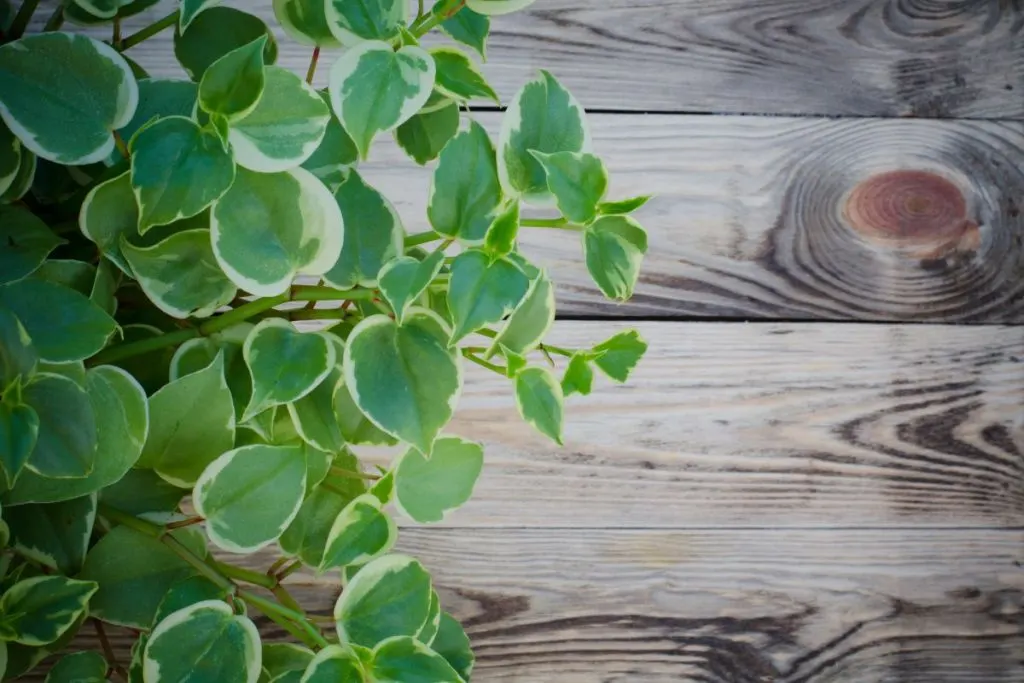
From spring to autumn, during the most active period for the development and growth of peperomia plants, it is necessary to supplement the soil with mineral fertilizers.
It is best to use a liquid fertilizer that is added during watering in a certain ratio. Fertilizer is added every two weeks, and during the winter months, top-dressing is completely stopped.
What Humid Conditions This Plant Prefers
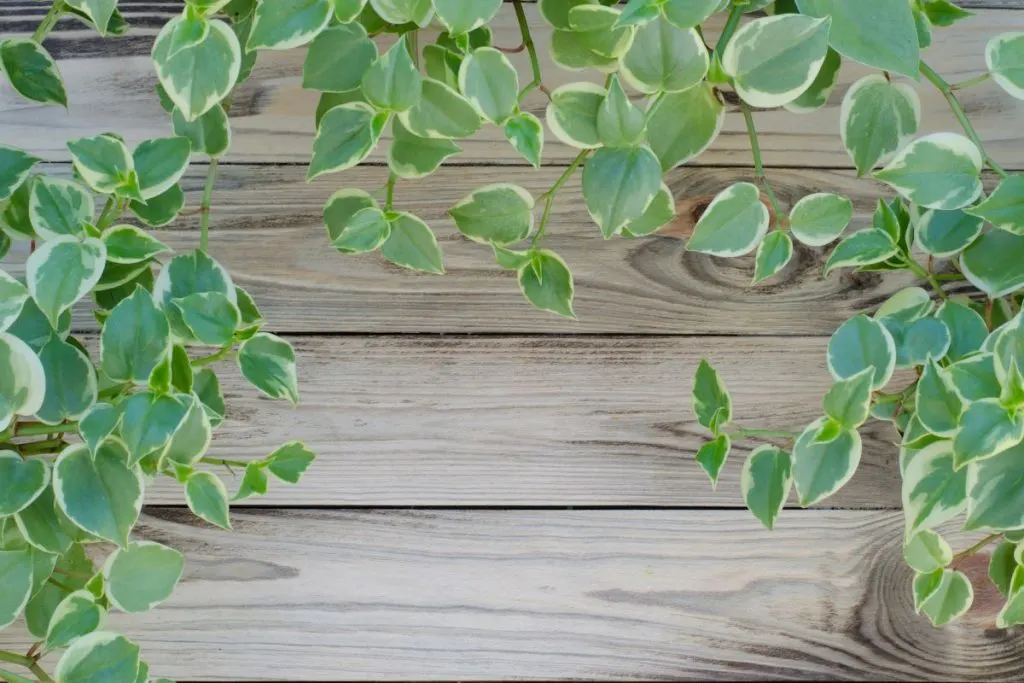
In its natural environment, in the tropical regions of Latin America, this sturdy trailer plant enjoys a humid atmosphere. So, this plant appreciates humidity and will not tolerate a too dry interior.
Humidity levels for this plant should be around 50 to 65%. Good drainage and enough water are very important for this plant care.
It is often responsible for root rot especially if your plants have shallow root systems. In case of excess water, the leaves fall and the plant dies. Our advice for peperomia plants:
- Do not store water on the plate.
- The substrate is expected to dry between waterings.
- Do not forget to spray the plant, especially in winter.
Propagate Cupid Peperomia
Peperomia is propagated by cutting the tops of leaves. Affected parts are cut in spring or summer, using clean scissors.
Place the cuttings in a pot of peat and sand, burying them about 5 inches long. The pot should be placed in a dark area, where the temperature is at least 60 F. Water the soil regularly.
Pruning Peperomia Scandens
We don’t advise or recommend pruning this variety. It is also not needed unless your plant has yellowing leaves or other plant issues. In those cases, pruning is a way of saving your plant.
When you do it for no reason, stem cuttings can cause issues for your peperomia, especially the ones with a shallow root system.
Of course, if you don’t like its shape and think it’s too long, you can prune it then as well. Pruning as a care process isn’t necessary for this variety, however.
Repotting Peperomia Plant – How To Do It
This plant needs fertile and drained soil. for this reason, it is recommended to mix it with sand and peat. When it comes time to transplant in the spring, it’s a good idea to choose a larger pot.
Never exceed 7 inches in diameter, as the plant doesn’t grow much in width. Terracotta pots should be preferred because they facilitate the transpiration of the plant.
Pests Of Peperomia Scandens
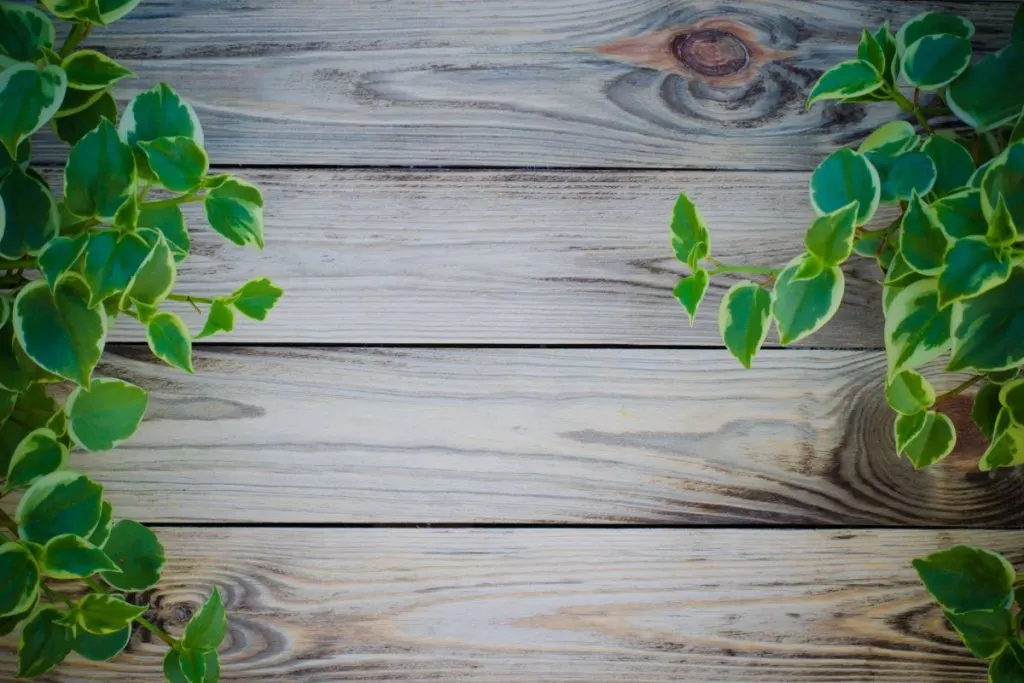
There are many “famous” pests of Peperomia Scandens. We bring you some of the most famous ones.
- Red spider mites
The red spider is a common insect that is recognizable by the brown spots on the leaves and the silky web under the leaves. It is visible after spraying with water as it comes out on the upper parts.
Although it cannot harm the whole plant, it leaves ugly marks on the leaves. It is effectively solved by wiping the leaves with a mixture of water and hand soap.
- Resocrils
Resocrils are the most serious pest because they can cause the plant to dry out. Although attacks are rare, they are more common if the plant is taken outdoors. They feed on sap and young leaves and after their attack, the plant begins to wither. The most well-known symptom is sudden and severe leaf fall.
- Woolly ears
Woolly lice are the most common parasites of tropical plants and are easily transmitted, so nearby plants are often infected.
They are tiny and difficult to spot with the naked eye on the plant, but they feed on cell juices and cause leaf curl. It is best to get rid of them by spraying insecticides.
How To Fix Pests Problem?
Spray the infected area as soon as you notice parasites. Garlic and prickly nettle extracts were once used. An alternative to this is to introduce a ladybug larva to your garden or build a ladybug shelter to encourage these beneficial insects to stay in your garden at all times.
You can also protect your peperomia this way. Cover the young plants with agro textile until they mature and become less sensitive. If necessary, spray them with insecticide and save them to encourage recovery.
Diseases Of Cupid Peperomia
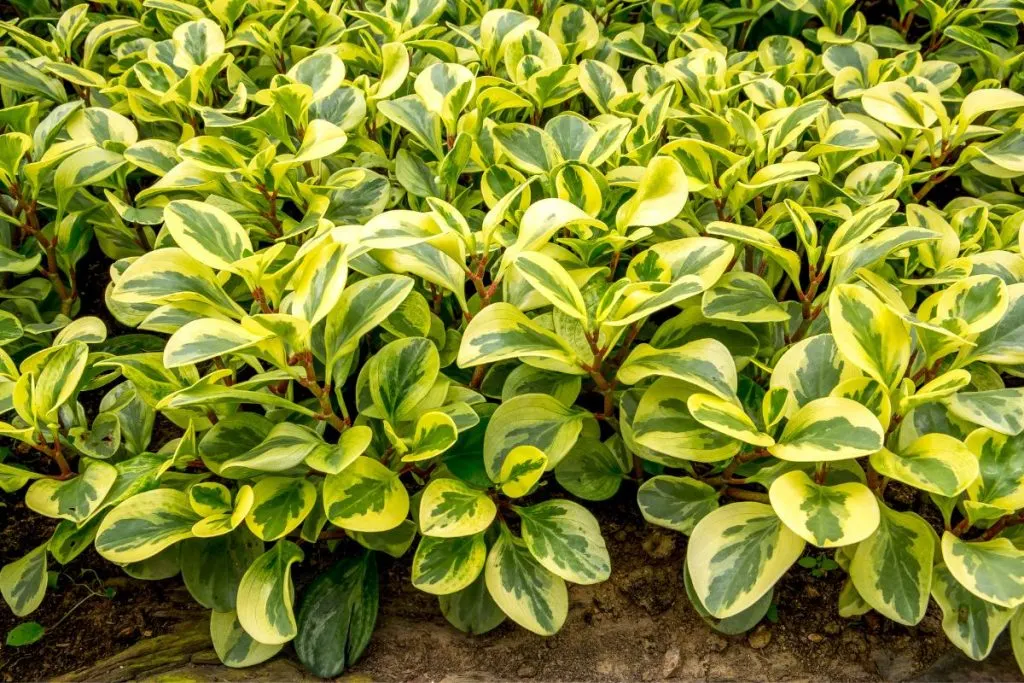
We bring you the most often diseases of peperomia plant.
- Root rot
Root rot is caused by too much water or too long water retention in the country where it grows. When planting peperomia, it is necessary to take care of drainage to reduce the possibility of rot.
It is also important to plant the plant in healthy and treated soil so that the disease does not spread through the soil.
- Leaf spot
Leaf spot occurs for several reasons. The first is excessive sun exposure which causes yellow spots that dry out over time. The second is excessive watering which causes the leaves to turn yellow and fall off over time.
Wrapping It Up

If I were you, I would buy a new pot and set my apartment ready for new roots and new growth. This amazing non-toxic plant will provide you with such a nice exotic look and you’ll be very thankful for it.
Also known as peperomia nitida, will make a grateful plant in your living room. Of course, you don’t necessarily need to buy this variegated version of the peperomia plant. Peperomia scandens aren’t the only type of peperomia.
You can read about other peperomia types and then you can decide which one to get for your home.

